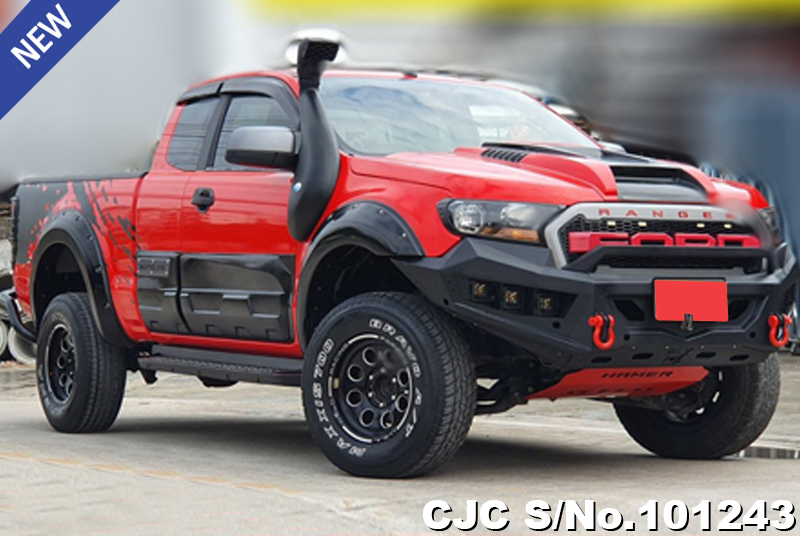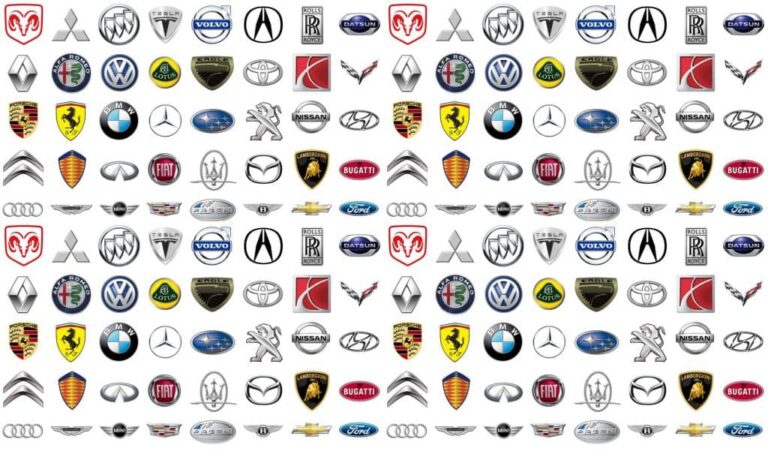I Want To Buy A Brand New Car: Your Ultimate Guide to a Seamless Purchase
I Want To Buy A Brand New Car: Your Ultimate Guide to a Seamless Purchase cars.truckstrend.com
The desire to buy a brand new car is a feeling many of us experience. It’s more than just acquiring a mode of transport; it’s about embarking on a new chapter with the latest technology, unblemished aesthetics, and the peace of mind that comes with a full factory warranty. The gleaming paint, the fresh interior scent, the promise of reliable journeys – it’s an exciting prospect. However, transforming this desire into a successful purchase requires careful planning, thorough research, and smart decision-making.
This comprehensive guide is designed to navigate you through every step of the journey, from the initial spark of "I want to buy a brand new car" to driving your dream vehicle off the lot. We’ll delve into budgeting, research, financing, negotiation, and post-purchase considerations, ensuring you’re well-equipped to make an informed and satisfying investment.
I Want To Buy A Brand New Car: Your Ultimate Guide to a Seamless Purchase
Section 1: Initial Self-Assessment – Understanding Your Needs and Budget
Before you even begin browsing models, the most crucial step is to look inward. What truly drives your desire for a new car, and what can you realistically afford?
Why Buy New? Weighing the Benefits:
While used cars offer value, buying new comes with distinct advantages:
- Latest Technology & Features: Access to cutting-edge infotainment, safety systems, and performance enhancements.
- Full Factory Warranty: Comprehensive coverage for a specified period/mileage, offering peace of mind against unexpected repairs.
- Customization: The ability to choose specific trims, colors, and optional packages directly from the factory.
- No Prior History: You’re the first owner, meaning no hidden accidents, questionable maintenance, or previous owner’s habits.
- Fuel Efficiency & Emissions: Newer models often boast improved fuel economy and lower emissions.
- Status & Satisfaction: The unique feeling of driving a brand-new vehicle.

Budgeting Beyond the Sticker Price:
The MSRP (Manufacturer’s Suggested Retail Price) is just the starting point. A brand new car involves several costs:
- Purchase Price: The negotiated price of the car.
- Sales Tax: Varies by state, a significant chunk of the total.
- Registration & Licensing Fees: Annual costs to legally operate your vehicle.
- Insurance: Premiums for a new car are often higher due to its value. Get quotes before you buy.
- Fuel Costs: Consider the car’s MPG and your typical driving habits.
- Maintenance: While less frequent in the initial years, factor in routine servicing.
- Depreciation: The biggest hidden cost. New cars lose value rapidly in the first few years.
- Financing Costs: Interest paid on your loan.

Actionable Insight: Create a detailed spreadsheet of all potential costs, not just the monthly payment. Aim for your total car expenses (payment, insurance, fuel, maintenance) to be no more than 15-20% of your net monthly income.
Defining Your Needs vs. Wants:
This is where practicality meets desire. Ask yourself:
- Purpose: Commuting, family transport, off-roading, towing, luxury?
- Passengers: How many people do you regularly transport?
- Cargo: Do you need ample trunk space, or the versatility of folding seats?
- Driving Conditions: City, highway, rural, snow, rough terrain?
- Fuel Type: Gasoline, hybrid, plug-in hybrid, electric?
- Features: What are non-negotiables (e.g., specific safety features, Apple CarPlay, AWD) versus nice-to-haves?
Based on these, you can narrow down car types: Sedan, SUV, Truck, Hatchback, Minivan, Coupe, Convertible, Electric Vehicle (EV), Hybrid.
Section 2: Research and Selection – Navigating the Market
With your needs and budget defined, it’s time to explore the vast automotive landscape.
Leveraging Online Resources:
The internet is your best friend in this phase:
- Manufacturer Websites: Explore models, view specifications, build and price configurations.
- Automotive Review Sites (e.g., Edmunds, Kelley Blue Book, Consumer Reports, Car and Driver): Read professional reviews, compare models side-by-side, check reliability ratings, and see owner reviews.
- Forums & Social Media Groups: Gain insights from current owners about real-world experiences, common issues, and tips.
- Pricing Tools: Use sites like TrueCar or dealer inventory sites to see what others are paying in your area and what’s available.
The Indispensable Test Drive:
Online research is good, but hands-on experience is vital.
- Schedule Multiple Test Drives: Drive your top 2-3 contenders.
- Replicate Your Daily Drive: If possible, drive on highways, city streets, and even bumpy roads.
- Assess Key Areas:
- Comfort: Seat ergonomics, visibility, ride quality.
- Handling: Steering feel, braking, cornering.
- Technology: Ease of use for infotainment, safety features.
- Space: Check headroom, legroom, cargo capacity for your needs.
- Noise: Wind, road, and engine noise.
- Don’t Rush: Take your time, ask questions, and don’t feel pressured.
Comparing Models and Dealerships:
- Feature-to-Feature: Create a comparison chart for your top choices, including safety ratings (NHTSA, IIHS), fuel economy, warranty specifics, and standard/optional features.
- Dealership Inventory: Check multiple dealerships for the specific model, trim, and color you want. Be aware that popular models might have limited availability or markups.
Actionable Insight: Compile a list of questions before your test drive. Pay attention not just to how the car drives, but also to how you interact with its controls and features.
Section 3: Financing Your New Car – Options and Strategies
This is where the rubber meets the road financially. Understanding your financing options is crucial to a cost-effective purchase.
Cash vs. Loan vs. Lease:
- Cash: Simplest, no interest, but ties up a large sum of money. You own the car outright immediately.
- Loan (Financing): The most common option. You borrow money and pay it back with interest over a set term (e.g., 36, 60, 72, 84 months). You own the car once the loan is paid off.
- Lease: Essentially renting the car for a fixed period (typically 2-4 years) with mileage limits. Lower monthly payments than a loan, but you don’t own the car at the end. Good for those who like a new car every few years and don’t drive much.
Understanding Loan Terms:
- APR (Annual Percentage Rate): The true cost of borrowing, including interest and fees. A lower APR is better.
- Loan Term: The length of time you have to repay. Shorter terms mean higher monthly payments but less total interest. Longer terms mean lower monthly payments but more total interest.
- Down Payment: A larger down payment reduces the loan amount, lowers your monthly payments, and reduces total interest paid. Aim for at least 10-20% if possible.
- Credit Score: A higher credit score (typically 700+) qualifies you for better interest rates. Check your score before applying for a loan.
Pre-Approval vs. Dealership Financing:
- Get Pre-Approved: Contact banks, credit unions, or online lenders before visiting the dealership. This gives you a benchmark interest rate and negotiating leverage. You’ll know exactly how much you can borrow and at what rate.
- Dealership Financing: Dealers work with multiple lenders and may offer competitive rates, sometimes even special manufacturer incentives (e.g., 0% APR). Always compare their offer with your pre-approval.
Trade-Ins:
If you have an existing car, decide whether to sell it privately or trade it in.
- Selling Privately: Usually yields more money, but requires effort (listing, showing, paperwork).
- Trading In: Convenient, but dealerships typically offer less than market value.
- Actionable Insight: Get an estimate for your trade-in value from sites like Kelley Blue Book or Edmunds before going to the dealership. Do not discuss your trade-in until you have agreed on the price of the new car.
Section 4: Negotiation and Purchase – Sealing the Deal
This is often the most daunting part, but with preparation, you can secure a great deal.
MSRP vs. Invoice Price:
- MSRP (Manufacturer’s Suggested Retail Price): The sticker price. What the dealer wants you to pay.
- Invoice Price: What the dealer paid the manufacturer for the car. This is closer to the dealer’s cost. You can often negotiate below MSRP, sometimes even below invoice (especially with incentives).
Negotiation Tactics:
- Do Your Homework: Know the invoice price, current incentives, and what others are paying in your area.
- Focus on the Out-the-Door Price: This includes the car price, taxes, fees, and any add-ons. Don’t just focus on the monthly payment.
- Be Patient and Prepared to Walk Away: This is your strongest leverage. There are always other cars and other dealerships.
- Separate Negotiations: Negotiate the new car’s price first, then your trade-in, then financing. Mixing them up can confuse the deal.
- Avoid Emotional Decisions: Stick to your budget and research.
- Beware of Add-ons: Dealers will offer rustproofing, paint protection, extended warranties, GAP insurance, etc. Research these carefully. Many are overpriced and can be purchased cheaper elsewhere or aren’t necessary.
Paperwork and Delivery:
- Read Everything: Before signing, carefully read the sales contract, financing agreement, and any other documents. Ensure all agreed-upon terms are reflected.
- Pre-Delivery Inspection: Before you drive off, thoroughly inspect the car for any scratches, dents, or missing features. Ensure all accessories (floor mats, manuals, second key fob) are present.
- Understand Your Warranty: Know what’s covered and for how long.
Actionable Insight: Aim to buy at the end of the month, quarter, or year. Dealerships often have sales targets they need to hit, making them more willing to negotiate.
Section 5: Post-Purchase Considerations – Owning Your New Car
Congratulations! You’ve bought a brand new car. Now, it’s time to ensure its longevity and your continued satisfaction.
- Insurance Activation: Ensure your new car is insured before you drive it off the lot.
- Understand Your Warranty: Read your owner’s manual and warranty booklet. Know what parts are covered and for how long.
- Follow Maintenance Schedule: Adhere to the manufacturer’s recommended service intervals to keep your warranty valid and your car running optimally.
- Registration and Licensing: Complete any necessary state registration and titling processes promptly.
- Driving Habits: Break in your new car according to manufacturer guidelines (if any). Drive safely and responsibly.
- Protect Your Investment: Regular cleaning, parking in safe areas, and avoiding harsh driving conditions will help preserve your car’s value and appearance.
Example New Car Price & Cost Overview Table
This table provides estimated costs for various new car categories. Actual prices and costs will vary based on model, trim, options, location, driving habits, and credit score.
| Car Type (Example Models) | Typical MSRP Range (USD) | Est. Annual Fuel Cost (Avg. 12k miles) | Est. Annual Insurance (Full Coverage) | Est. Annual Maintenance (First 3 Yrs Avg.) | Key Benefits / Considerations |
|---|---|---|---|---|---|
| Subcompact Sedan/Hatch (e.g., Kia Rio, Mitsubishi Mirage) | $16,000 – $22,000 | $1,000 – $1,300 | $1,200 – $1,800 | $300 – $500 | Affordable, fuel-efficient, easy to park. Limited space/features. |
| Compact Sedan/Hatch (e.g., Honda Civic, Toyota Corolla) | $22,000 – $28,000 | $1,100 – $1,500 | $1,300 – $2,000 | $400 – $600 | Balanced, reliable, good features for price. |
| Mid-size Sedan (e.g., Toyota Camry, Honda Accord) | $26,000 – $35,000 | $1,200 – $1,700 | $1,400 – $2,200 | $450 – $700 | Comfortable, spacious, strong resale value. |
| Compact SUV (e.g., Toyota RAV4, Honda CR-V) | $27,000 – $38,000 | $1,300 – $1,800 | $1,500 – $2,300 | $500 – $800 | Versatile, good cargo, AWD options. High demand. |
| Mid-size SUV (e.g., Ford Explorer, Kia Telluride) | $35,000 – $55,000 | $1,500 – $2,500 | $1,700 – $2,800 | $600 – $900 | More passenger/cargo space, often 3-rows. Higher fuel/insurance. |
| Full-size Truck (e.g., Ford F-150, Ram 1500) | $35,000 – $70,000+ | $2,000 – $3,500+ | $1,800 – $3,000+ | $700 – $1,100+ | Hauling/towing capacity, rugged. Higher TCO. |
| Electric Vehicle (EV) (e.g., Tesla Model 3, Hyundai IONIQ 5) | $40,000 – $65,000+ | $400 – $800 (electricity) | $1,600 – $2,500 | $300 – $600 (less moving parts) | Eco-friendly, lower fuel/maintenance. Higher upfront cost, range anxiety. |
Note: Fuel costs are based on current national averages and estimated MPG for typical models in each category. Insurance costs are highly variable based on driver history, location, and coverage. Maintenance is typically lower for new cars in the first few years due to warranty and modern design.
Frequently Asked Questions (FAQ)
Q1: Is buying a new car always better than buying a used car?
A1: Not always. Buying new offers benefits like warranty, latest tech, and no prior history. Used cars offer better value due to depreciation. Your budget, priorities, and risk tolerance should guide your decision.
Q2: When is the best time to buy a new car?
A2: Generally, towards the end of the month, quarter, or year (especially December). Dealerships aim to meet sales quotas, which can lead to better deals. Holidays like Black Friday also often feature promotions.
Q3: Should I tell the dealer I have a trade-in upfront?
A3: It’s often advised to negotiate the price of the new car before discussing your trade-in. This prevents the dealer from shifting profits from one part of the deal to another.
Q4: What is the difference between MSRP and Invoice Price?
A4: MSRP (Manufacturer’s Suggested Retail Price) is the sticker price. Invoice price is what the dealer paid the manufacturer. You generally want to negotiate closer to the invoice price, or even below it if manufacturer incentives are strong.
Q5: How much should I put down on a new car?
A5: A down payment of at least 10-20% is recommended. A larger down payment reduces your loan amount, lowers monthly payments, and can help you avoid being "upside down" (owing more than the car is worth) early in the loan term.
Q6: Can I negotiate the price of a new car?
A6: Yes, absolutely! Most new car prices are negotiable, especially the MSRP. Research, patience, and walking away power are key to successful negotiation.
Q7: What documents do I need to buy a car?
A7: You’ll typically need your driver’s license, proof of insurance, proof of income (for financing), your pre-approval letter (if applicable), and your current vehicle’s title/registration if you’re trading it in.
Conclusion
The journey from "I want to buy a brand new car" to proudly owning one is a significant undertaking, but an incredibly rewarding one when approached strategically. By taking the time for thorough self-assessment, diligent research, smart financing decisions, and confident negotiation, you empower yourself to make a purchase that aligns perfectly with your needs, desires, and financial well-being.
Remember, patience is a virtue in car buying. Don’t rush into decisions, and always be prepared to walk away if a deal doesn’t feel right. With this comprehensive guide in hand, you’re not just buying a car; you’re investing in years of reliable transportation, cutting-edge features, and the unparalleled joy of driving something truly new. Happy car hunting!






